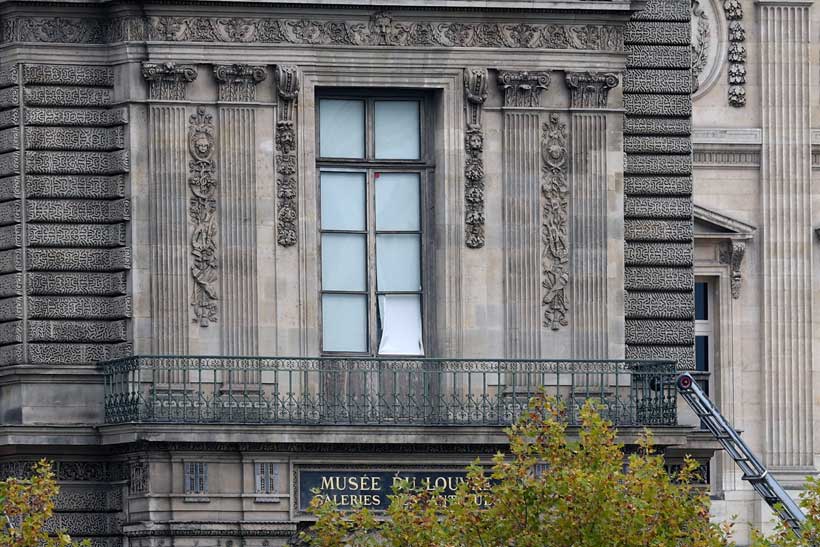Brian O’Connor thinks part of his success is due to California voter approval of Proposition 13, the landmark property tax reduction proposal that catalyzed the taxpayer revolt more than a decade ago.
He is the general manager of the Bel-Air Patrol, which operates Los Angeles’ oldest private residential security patrol service. Since Proposition 13, the company has greatly expanded its territory and number of clients, he said.
Business is good and getting better for a growing number of such companies that deploy armed and unarmed guards to watch over Southern California neighborhoods. In fact, such businesses are growing all over the nation.
Residential guard services are a fast-growing segment of the security guard business, says Robert McCrie, editor of Security Letter, a trade publication. He estimated that residential guard services account for 10% to 15% of the nation’s $6.5-billion annual security guard bill. “The growth has been quite unmistakable since World War II. One reason is that people simply feel afraid,” said McCrie, who is also a professor of security management at New York’s John Jay College of Criminal Justice.
More Seek Permits
The public’s perception that government services have declined in California since the passage of Proposition 13 adds to the fear, O’Connor said. People feel that their local police departments are stretched too thin, he said. “The police obviously have to prioritize where they concentrate their effort,” he said.
People also want more control of their personal safety, he said. The average homeowner can’t control the police, but he can hire and fire private security firms at will, he said.
Within the city of Los Angeles, about 50 firms have Los Angeles Police Department permits to offer residential patrol service. Many more operate in the county, and “there may be some operating illegally (in Los Angeles),” said Det. Richard Rudell, chief of the permit section of the Los Angeles Police Commission.
Rudell said he has noted a steady increase in the number of firms applying for permits in recent years, although “some have subsequently gone out of business.” Every year, a number don’t renew their permits, he says.
Security guards do not have police powers. For example, guards patrolling a neighborhood may not detain someone believed to be acting suspiciously, said Lt. Fred Nixon, a Los Angeles Police Department spokesman.
Like anyone, they may make a citizen’s arrest of a person caught committing a crime. Guard companies claim that their presence deters crime, but independent statistical studies aren’t available to verify that claim.
“The police department believes that a highly visible patrol tends to deter crime,” Nixon said. “That is not a vote for or against private patrols. (The patrol) is only part of the equation.”
Private companies offer different levels of services. The larger security alarm companies provide armed guards to respond to an alarm. Other services simply drive through a neighborhood, or by an individual residence, or stop and inspect the exterior of properties. Still others provide mail and newspaper pickups for clients who are out of town and an escort service for clients fearful of entering an empty house after being away for a period.
Added Problems
Although the concept of security patrols seem simple, it’s not that easy for small operators–who are the vast majority of patrol businesses–to make a patrol service a success, said Robert Rockwell, a Walnut Creek, Calif., security management consultant.
Patrol services have all the challenges of hiring and supervising personnel as other guard companies, he said, with the additional burden of purchasing and maintaining vehicles that are driven constantly, he said. They also have the complication of getting a sufficient client base and calculating patrol routes under a price structure that will produce a profit, he said.
Because of the complications, many of the nation’s largest providers of security guards have shied away from that segment, he said, although many will provide a stationary guard for an apartment building, or gated community. (The largest segment of the security guard business is providing on-site guards for businesses and factories.)
Many larger companies that offer residential patrols are essentially in the business of selling security alarms.
Rockwell is also vice president of California Contract Security Guard Service, a trade group of 125 companies. “Very few of our members are involved,” he said.
Most residential patrols are small, perhaps operating with two or three people, he said. “One guy starts a patrol business where he does the patrols himself. Then he hires somebody else to take (another) shift,” Rockwell said.
Thomas Walthen acquired residential patrols in 30 cities across the country, including one in Los Angeles, when his Van Nuys-based California Plant Protection bought the venerable Pinkerton Security Service in 1987, creating a tie between CPP/Pinkerton and Borg-Warner’s security business as the nation’s largest provider of security guards.
High Accident Rate
(Borg-Warner includes Burns International Security Services, Wells Fargo Guard Services and Baker Industries, the parent of the Bel-Air Patrol). The acquisition put Walthen in a business segment that he abandoned 20 years ago. Unlike many services in the old days, Pinkerton has developed a “substantially sophisticated patrol service,” Walthen said.
Nevertheless, he added, “We’re still in the process of evaluating the operation. It looks like a profitable arm,” he said. But there are some problems. “The ratio of accidents to miles driven seem to be terribly out of line,” he said, and nobody seems to know why.
Although relatively big companies are in the minority among those offering residential patrols, they are among the best known in Southern California. A familiar sight throughout affluent neighborhoods are lawns and gardens sprouting signs for Bel-Air, MacGuard Security Services and Westec Security, a unit of Japan’s SECOM Co. All three sell alarm systems and offer armed response to alarms as well as neighborhood patrols.
“We’re not a security guard company. We sell a concept of security,” said Westec President Michael Kaye, explaining how the company’s alarm systems interact with a staff of almost 800 people. About 200 are guards on patrol. The company views itself as playing an “observe and report” role for the police. However, he said, the company plays a crucial prevention role.
“We’ve found time and time again that if a patrol is in a neighborhood, there is less crime. Burglars are basically lazy and will take the path of least resistance,” he said. Westec cites the experience of three Westside communities where it has tracked crime statistics before and after patrols.
Incidents Drop
One area with 400 homes had several burglaries a month before Westec began patrols seven years ago. Since patrols started, there have been no more than three burglaries a year and only one in 1988. Another neighborhood with 500 homes reported seven to 10 robberies a month before the patrols, the company said, but in the nine years of patrols, there have been less than six a year. Thus far in 1988, there have been three incidents.
A community of 250 homes reported several burglaries a month before the Westec patrols began seven years ago, the company said, but has had no more than two per year since. There haven’t been any incidents reported in 1988, the company said.
“We’re in the public relations and protection business,” said O’Connor, the retired British policeman who runs Bel-Air Patrol. “We’re never in conflict with law enforcement because we aren’t in that business,” he added.

























